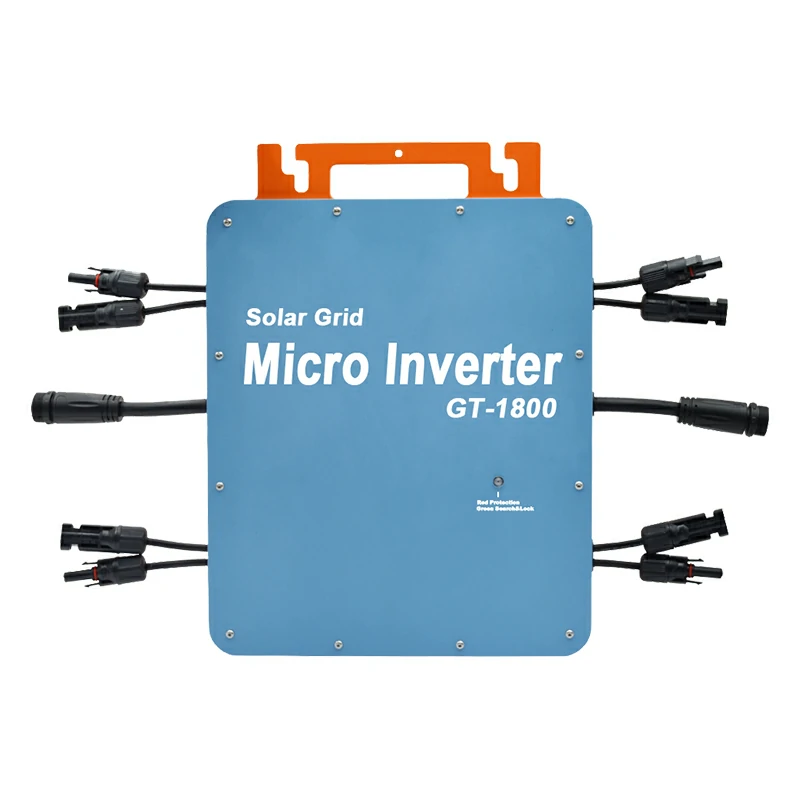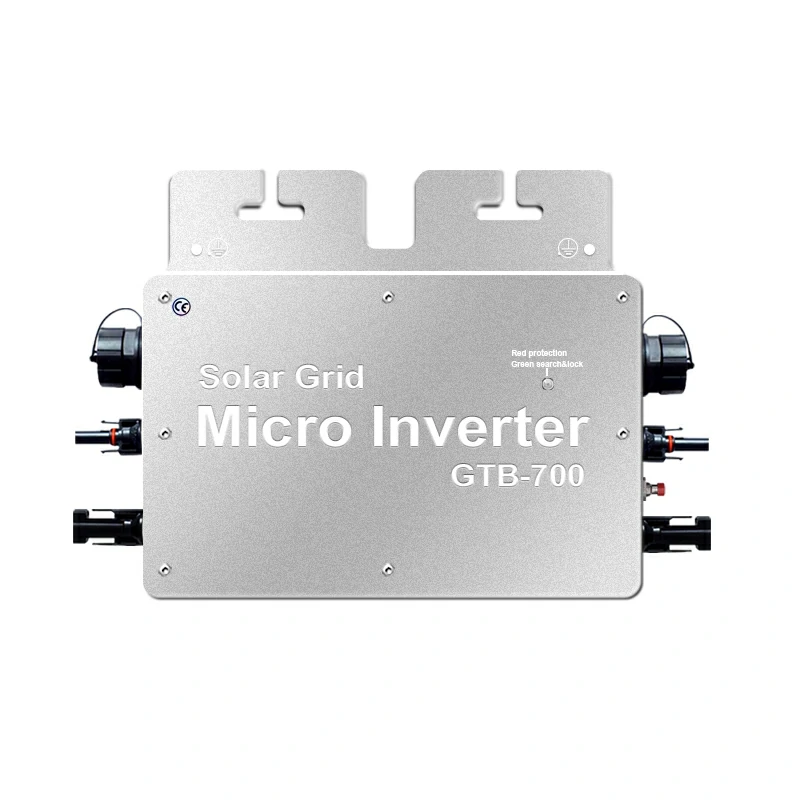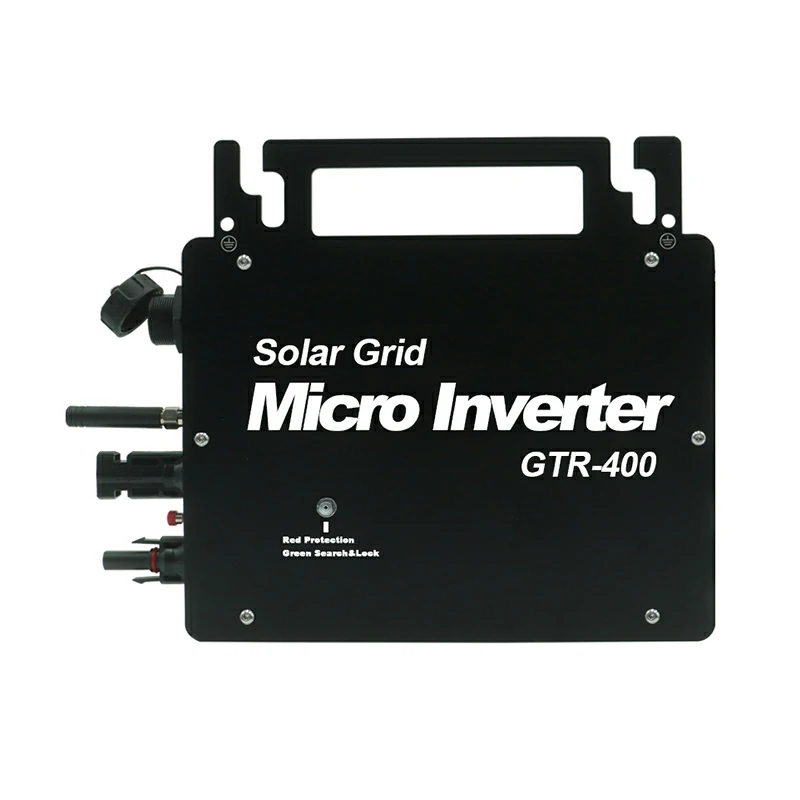Integrating smart grid technologies is crucial for optimizing energy distribution and consumption in today’s rapidly evolving energy landscape. At the heart of this transformation lies the innovative technology of grid-connected micro inverters. These devices play a pivotal role in enhancing the efficiency and reliability of solar energy systems, thereby contributing significantly to the advancement of smart grids worldwide.

Understanding Grid-Connected Micro Inverters
Definition and Function
A grid-connected micro inverter is a compact power conversion device that converts direct current (DC) electricity generated by solar panels into alternating current (AC) electricity suitable for use in the grid. Unlike traditional grid-connected inverters, which are typically centralized and serve multiple panels, micro inverters operate at the panel level, offering greater control and optimization capabilities.
Key Features and Benefits
Grid-connected micro inverters offer a multitude of benefits, including:
- Enhanced energy harvest: By operating at the panel level, micro inverters mitigate the effects of shading, soiling, and panel-level variations, maximizing energy production.
- Increased system reliability: The decentralized nature of micro-inverter systems reduces the impact of individual panel failures on overall system performance, ensuring higher uptime and reliability.
- Improved monitoring and control: Micro inverter systems enable real-time monitoring of individual panel performance, allowing for proactive maintenance and optimization.
- Greater design flexibility: With micro inverters, solar panel systems can be designed with varying orientations, tilts, and panel types, optimizing energy production in diverse conditions.
Comparison with Traditional Inverters
While traditional grid-connected inverters have been the backbone of solar energy systems for decades, they present certain limitations regarding efficiency, reliability, and flexibility. Unlike micro inverters operating at the panel level, traditional inverters are centralized and serve multiple panels, making them susceptible to performance degradation due to shading, soiling, and panel-level variations.
Advantages of Smart Grid Integration
In the context of smart grid integration, grid-connected micro inverters offer several distinct advantages:
- Enhanced efficiency and reliability: By operating at the panel level, micro inverters mitigate the effects of shading and panel-level variations, maximizing energy production and system reliability.
- Contribution to grid stability and flexibility: Micro inverter systems enhance grid stability by providing localized voltage support and reactive power control, thereby improving the overall strength and flexibility of the grid.
- Facilitation of renewable energy integration: Micro inverter systems enable seamless integration of distributed renewable energy resources, such as solar panels, into the grid, reducing reliance on fossil fuels and promoting a cleaner, more sustainable energy future.
Addressing User Concerns
Cost-effectiveness and Return on Investment
One of the primary concerns for users considering the adoption of grid-connected micro inverters is the cost-effectiveness and return on investment. While micro-inverter systems may have a higher upfront cost compared to traditional inverters, they offer significant long-term benefits that justify the investment.
Micro-inverter systems typically have lower installation costs due to simplified design and wiring requirements, offsetting the initial equipment costs. Additionally, the enhanced energy harvest and reliability offered by micro inverters result in higher energy yields and reduced maintenance costs over the system’s lifetime, ultimately leading to a faster return on investment.
Compatibility with Existing Solar Panel Systems
Another common concern is the compatibility of grid-connected micro inverters with existing solar panel systems. Fortunately, micro inverter systems are designed to be compatible with a wide range of solar panels, inverters, and monitoring systems, making them suitable for retrofitting existing installations or integrating into new ones.
Most micro inverter manufacturers provide detailed compatibility guidelines and compatibility-checking tools to ensure seamless integration with existing systems. Furthermore, the modular nature of micro-inverter systems allows for easy scalability and expansion, enabling users to gradually upgrade their systems as needed without significant disruptions or expenses.
Maintenance Requirements and Longevity
Maintenance requirements and longevity are important considerations for users evaluating grid-connected micro inverters. Compared to traditional inverters, microinverters typically have fewer moving parts and undergo less wear and tear, resulting in lower maintenance requirements and longer operational lifespans.
Routine maintenance tasks for micro-inverter systems are minimal and primarily involve periodic inspections and cleaning of panels to ensure optimal performance. Additionally, most micro inverter manufacturers offer warranties ranging from 10 to 25 years, providing users with peace of mind and long-term protection against potential failures or defects.
Regulatory Landscape and Standards
In grid-connected micro inverters, navigating the regulatory landscape and adhering to industry standards is paramount for users and installers. Understanding the regulatory requirements and ensuring compliance is essential to successfully deploying and operating micro inverter systems.
Overview of Relevant Regulations and Certifications
Various regulations and standards govern grid-connected micro inverters’ design, installation, and operation. These regulations may vary depending on the geographic location and jurisdiction, but common ones include:
- Grid interconnection standards define the technical requirements for connecting renewable energy systems to the grid, such as solar panels with micro inverters. They often specify parameters such as voltage, frequency, and power quality to ensure seamless integration and compatibility with the grid.
- Safety certifications: Micro inverter systems must comply with safety standards and certifications to ensure they meet stringent safety requirements and protect users, installers, and grid operators from electrical hazards. Common safety certifications include UL (Underwriters Laboratories) certification in the United States and CE (Conformité Européenne) certification in Europe.
- Utility interconnection agreements: In many jurisdictions, grid-connected renewable energy systems, including those with micro inverters, are subject to utility interconnection agreements. These agreements outline the terms and conditions for connecting the system to the grid, including technical requirements, metering arrangements, and grid access fees.
Compliance Considerations for Users
For users considering the adoption of grid-connected micro inverters, ensuring compliance with relevant regulations and standards is essential to avoid regulatory penalties, grid disconnection, or safety hazards. It is imperative to work with qualified installers knowledgeable about local laws and ensure proper installation and compliance with all requirements.
Users should also verify that the microinverter systems they intend to purchase are certified by recognized testing laboratories and comply with applicable safety standards and grid interconnection requirements. Manufacturers typically provide documentation and certification information to demonstrate compliance with regulatory requirements.
Future Trends and Anticipated Developments
Looking ahead, the regulatory landscape for grid-connected micro inverters is expected to evolve in response to advancements in technology, changes in energy policies, and shifting market dynamics. Anticipated developments may include:
- Harmonization of standards: Efforts to harmonize grid interconnection standards and safety regulations across different regions to facilitate the global deployment of microinverter systems and promote interoperability.
- Integration of advanced functionalities: Continued innovation in microinverter technology, such as enhanced grid support capabilities, advanced monitoring and control features, and integration with energy storage systems, to further optimize grid performance and resilience.
- Policy support for distributed energy resources: Increasing policy support and incentives for distributed energy resources, including microinverter systems, to accelerate their adoption and promote the transition to a more decentralized and sustainable energy infrastructure.
Case Studies and Success Stories
Real-world examples provide compelling evidence of the effectiveness and benefits of grid-connected micro inverters. Let’s explore some notable case studies and success stories that highlight the impact of micro-inverter technology in various applications.
Case Study 1: Residential Solar Installation
In a residential solar installation project in California, a homeowner opted for a grid-connected microinverter system to maximize energy production and system reliability. By installing micro inverters on each solar panel, the system overcame shading issues caused by nearby trees and buildings, resulting in significantly higher energy yields than a traditional string inverter setup. The homeowner reported increased satisfaction with the system’s performance and reliability, validating the decision to choose microinverters for their installation.
Case Study 2: Commercial Solar Array
In a commercial solar array deployment in Australia, a large-scale solar project utilized grid-connected micro inverters to optimize energy production and simplify installation. The modular nature of micro-inverter systems allowed for easy scalability and expansion, enabling the project to grow over time without the need for extensive redesign or infrastructure upgrades. The micro inverter system’s advanced monitoring and control capabilities also provided valuable insights into system performance, allowing for proactive maintenance and optimization to maximize energy harvest and return on investment.
Success Story: Community Solar Initiative
In a community solar initiative in Germany, a cooperative organization deployed grid-connected micro inverters to enable residents to invest in and benefit from solar energy generation collectively. Installing micro inverters on each panel in the community solar array allows participants to track their energy production and receive proportional credits on their electricity bills. The project provided financial incentives for participants and contributed to the local energy transition by increasing renewable energy penetration and community engagement.
Lessons Learned and Best Practices
These case studies and success stories offer valuable insights and lessons learned for users considering the adoption of grid-connected micro inverters:
- Tailor solutions to specific needs: Micro inverter technology offers flexibility and customization options to address unique challenges and requirements, such as shading, space constraints, and system scalability.
- Embrace modular design: The modular design of microinverter systems enables easy scalability and expansion, allowing users to adapt their systems to changing needs and circumstances over time.
- Prioritize monitoring and maintenance: Regular monitoring and proactive maintenance are essential for maximizing the performance and longevity of microinverter systems, ensuring optimal energy production and return on investment.
By learning from these real-world examples and following best practices, users can make informed decisions and maximize the benefits of grid-connected micro inverters in their solar energy projects.
Conclusion
In conclusion, the role of grid-connected micro inverters in the evolution of smart grid technologies cannot be overstated. These innovative devices offer many benefits, including enhanced efficiency, reliability, and flexibility, making them indispensable components of modern solar energy systems.
From residential installations to large-scale commercial projects and community initiatives, micro inverters have demonstrated their ability to optimize energy production, overcome technical challenges, and empower users to take control of their energy consumption.
As the global transition to renewable energy accelerates and smart grid technologies continue to evolve, the importance of microinverters in enabling distributed energy resources and promoting grid resilience will only grow. By embracing micro-inverter technology and adhering to best practices, users can unlock the full potential of solar energy and contribute to a more sustainable and resilient energy future.
In closing, let us recognize the pivotal role of grid-connected micro inverters in shaping the future of energy and driving the transition towards a cleaner, smarter, and more sustainable grid.
Thank you for joining us in exploring microinverter technology and its role in the evolution of smart grid technologies.




